Decreased perfusion, vasoconstriction caused by Anemia, decreased hematocrit and or shock.
What Is pallor?

Deep-seated infection of the skin caused by S. aureus, is characterized by the formation of bullae.
What is impetigo of the nostril?
Benign overgrowths of fibrous tissue at the site of a scar or trauma.
What are keloids?
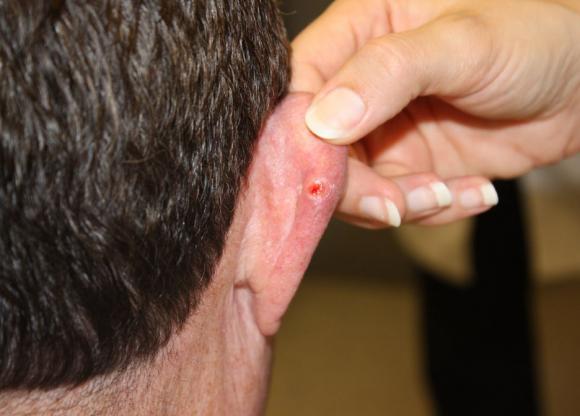
Generally appears on sun-exposed areas of the body, such as the face, neck, hands, and scalp. Usually begins as a small, waxy nodule with rolled, translucent, pearly borders; telangiectatic vessels may be present.
What is basal cell carcinoma (BCC)?
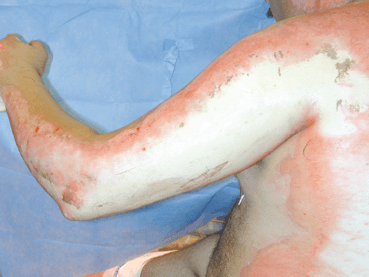
Burns involve total destruction of the epidermis, dermis, and, in some cases, damage of underlying tissue. Wound color ranges widely from pale white to red, brown, or charred.
What is Third-degree (full-thickness) burn to arm and upper back with surrounding second-degree (partial-thickness) burn?
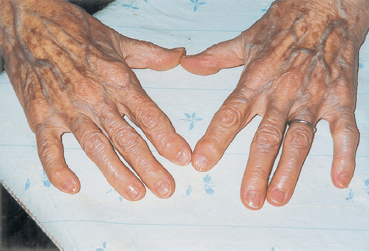
These are normal and require no special attention unless the skin becomes infected or irritated.
What is skin atrophy common to aging skin?
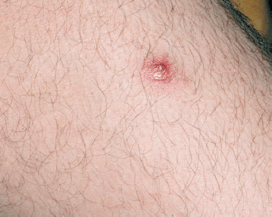
An acute inflammation arising deep in one or more hair follicles and spreading into the surrounding dermis.
What is a painful furuncle (boil) on the thigh?

Benign vascular tumors that involve the skin and the subcutaneous tissues. They are present at birth and may occur as flat, violet-red patches or as raised, bright red, nodular lesions.
What are angiomas?

A malignant proliferation arising from the epidermis. Its precursor is typically actinic keratosis. Although it usually appears on sun-damaged skin, it may arise from normal skin or from pre-existing skin lesions.
What is squamous cell carcinoma (SCC)?

Burn injuries that extend into deep tissue, muscle, or bone.
What is a fourth-degree burn to second digit?

Yellow first in sclerae, hard palate, and mucous membranes; then over skin.
What is the yellow hue of jaundice?
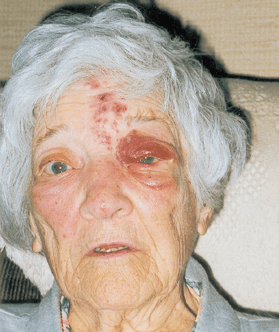
An infection caused by the varicella-zoster virus (VZV), which are members of a group of deoxyribonucleic acid (DNA) viruses.
What is herpes zoster (shingles)?
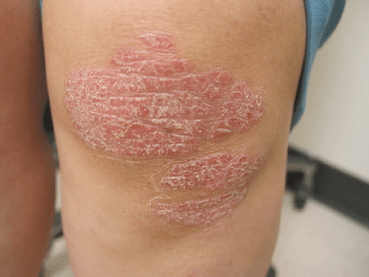
A chronic inflammatory multisystem disorder of the skin typically characterized by the appearance of silvery plaques that most commonly appear on the skin over the elbows, knees, scalp, lower back, and buttocks.
What is psoriasis?
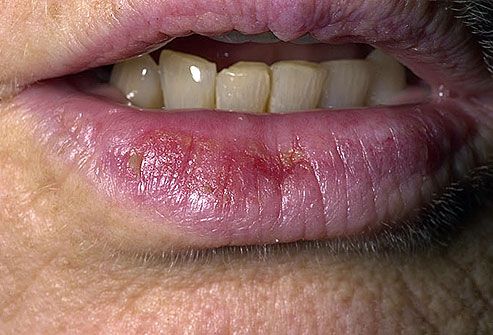
A precancerous condition that usually appears on the lower lips. Scaly patches or persistent roughness of the lips may be present. May evolve into invasive squamous cell carcinoma if not treated.
What is Actinic Cheilitis (Farmer's Lip)?
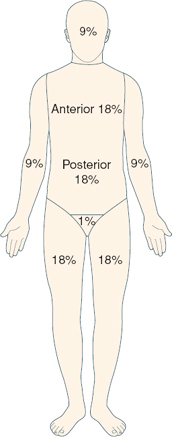
Estimated percentage of total body surface area (TBSA) in the adult is calculated by sectioning the body surface into areas with a numerical value related to nine.
What is the rule of nines?
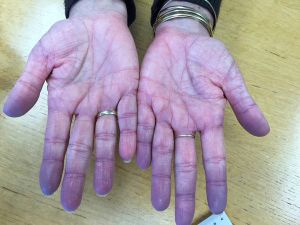
Increased amount of unoxygenated hemoglobin that leads to dusky blue appearance.
What is cyanosis?
Toe nails thicken, crumble easily, and lack luster.
What is tinea unguium (toenails; onychomycosis)?

Benign, wartlike lesions of various sizes and colors, ranging from light tan to black. They are usually located on the face, shoulders, chest, and back and are the most common skin tumors seen in middle-aged and older adults.
What are seborrheic and actinic keratoses?

A malignancy of endothelial cells that line the small blood vessels. Manifested clinically by lesions of the skin, oral cavity, gastrointestinal tract, and lungs.
What is kaposi sarcoma (KS)?

A surgical incision through fascia to relieve constricted muscle and restore tissue perfusion.
What is fasciotomy of upper arm?
Increased blood flow through engorged arterial vessels, as in inflammation, fever, alcohol intake, blushing.
What is erythema?
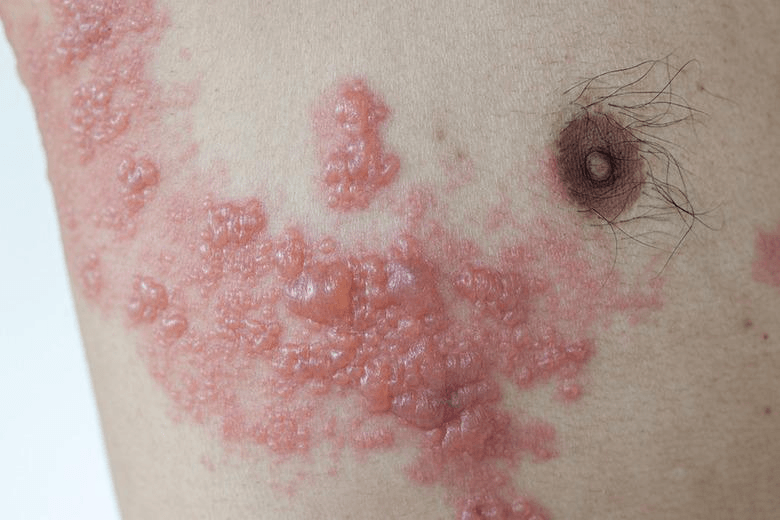
A rash which develops as a stripe of blisters that wraps around either the left or right side of your torso.
What is herpes zoster?

Rapid onset of erythema involving much of the skin surface and mucous membranes, including the oral mucosa, conjunctiva, and genitalia.
What is Toxic Epidermal Necrolysis and Stevens–Johnson Syndrome?
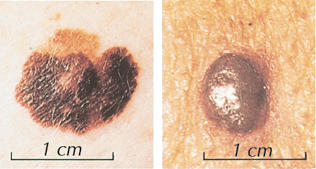
A cancerous neoplasm characterized by neoplastic melanocytes present in the epidermis and the dermis (and sometimes the subcutaneous cells).
What are two forms of melanoma?
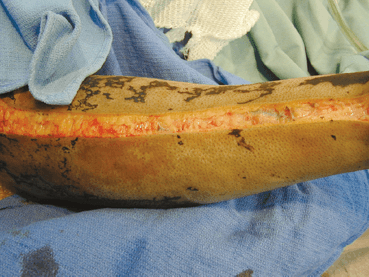
A surgical incision through eschar, or decompression of edema formation via fasciotomy (i.e., surgical incision through fascia to relieve constricted muscle) to restore tissue perfusion.
What is escharotomy of forearm?